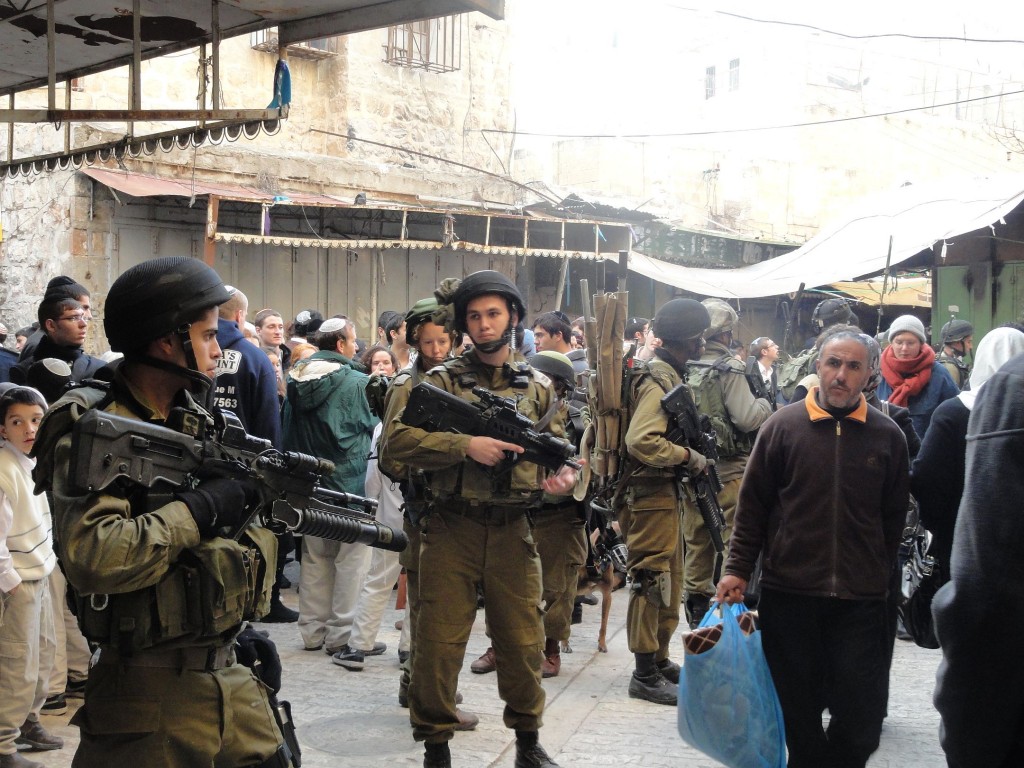Not All Israeli Citizens Are Equal
By Yousef Munayyer, May 23, 2012
…
I’m a Palestinian who was born in the Israeli town of Lod, and thus I am an Israeli citizen. My wife is not; she is a Palestinian from Nablus in the Israeli-occupied West Bank. Despite our towns being just 30 miles apart, we met almost 6,000 miles away in Massachusetts, where we attended neighboring colleges.
A series of walls, checkpoints, settlements and soldiers fill the 30-mile gap between our hometowns, making it more likely for us to have met on the other side of the planet than in our own backyard.
Never is this reality more profound than on our trips home from our current residence outside Washington.
Tel Aviv’s Ben-Gurion International Airport is on the outskirts of Lod (Lydda in Arabic), but because my wife has a Palestinian ID, she cannot fly there; she is relegated to flying to Amman, Jordan. If we plan a trip together — an enjoyable task for most couples — we must prepare for a logistical nightmare that reminds us of our profound inequality before the law at every turn.
Even if we fly together to Amman, we are forced to take different bridges, two hours apart, and endure often humiliating waiting and questioning just to cross into Israel and the West Bank. The laws conspire to separate us.
If we lived in the region, I would have to forgo my residency, since Israeli law prevents my wife from living with me in Israel. This is to prevent what Prime Minister Benjamin Netanyahu once referred to as “demographic spillover.” Additional Palestinian babies in Israel are considered “demographic threats” by a state constantly battling to keep a Jewish majority. (Of course, Israelis who marry Americans or any non-Palestinian foreigners are not subjected to this treatment.)
Last week marked Israel’s 64th year of independence; it is also when Palestinians commemorate the Nakba, or “catastrophe,” during which many of Palestine’s native inhabitants were turned into refugees.
In 1948, the Israeli brigade commander Yitzhak Rabin helped expel Lydda’s Palestinian population. Some 19,000 of the town’s 20,000 native Palestinian inhabitants were forced out. My grandparents were among the 1,000 to remain.
They were fortunate to become only internally displaced and not refugees. Years later my grandfather was able to buy back his own home — a cruel absurdity, but a better fate than that imposed on most of his neighbors, who were never permitted to re-establish their lives in their hometowns.
Three decades later, in October 1979, this newspaper reported that Israel barred Rabin from detailing in his memoir what he conceded was the “expulsion” of the “civilian population of Lod and Ramle, numbering some 50,000.” Rabin, who by then had served as prime minister, sought to describe how “it was essential to drive the inhabitants out.”
Two generations after the Nakba, the effect of discriminatory Israeli policies still reverberates. Israel still seeks to safeguard its image by claiming to be a bastion of democracy that treats its Palestinian citizens well, all the while continuing illiberal policies that target this very population. There is a long history of such discrimination.
In the 1950s new laws permitted the state to take control over Palestinians’ land by classifying them “absentees.” Of course, it was the state that made them absentees by either preventing refugees from returning to Israel or barring internally displaced Palestinians from having access to their land. This last group was ironically termed “present absentees” — able to see their land but not to reach it because of military restrictions that ultimately resulted in their watching the state confiscate it. Until 1966, Palestinian citizens were governed under martial law.
Today, a Jew from any country can move to Israel, while a Palestinian refugee, with a valid claim to property in Israel, cannot. And although Palestinians make up about 20 percent of Israel’s population, the 2012 budget allocates less than 7 percent for Palestinian citizens.
Tragically for Palestinians, Zionism requires the state to empower and maintain a Jewish majority even at the expense of its non-Jewish citizens, and the occupation of the West Bank is only one part of it. What exists today between the Jordan River and the Mediterranean Sea is therefore essentially one state, under Israeli control, where Palestinians have varying degrees of limited rights: 1.5 million are second-class citizens, and four million more are not citizens at all. If this is not apartheid, then whatever it is, it’s certainly not democracy.
The failure of Israeli and American leaders to grapple with this nondemocratic reality is not helping. Even if a two-state solution were achieved, which seems fanciful at this point, a fundamental contradiction would remain: more than 35 laws in ostensibly democratic Israel discriminate against Palestinians who are Israeli citizens.
For all the talk about shared values between Israel and the United States, democracy is sadly not one of them right now, and it will not be until Israel’s leaders are willing to recognize Palestinians as equals, not just in name, but in law.
Yousef Munayyer is executive director of the Jerusalem Fund.
…
http://www.nytimes.com/2012/05/24/opinion/not-all-israeli-citizens-are-equal.html or http://nyti.ms/JWcB0v
Photograph of Israeli soldiers clearing a path for tours of Hebron’s souk, organized by and for Jewish settlers. http://livingstonesofpalestine.wordpress.com/2012/01/02/settler-tours-in-hebron/ and http://bit.ly/JBUO0y

